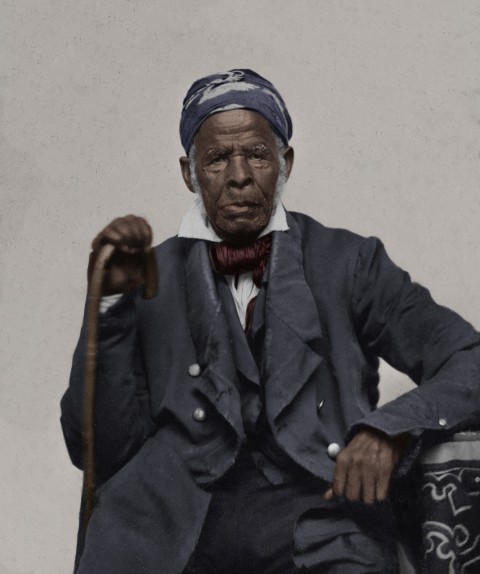Muslim slave’s narrative offers new window on Africans in America
A digitized version of Omar ibn Said’s 15-page autobiography is now available through the Library of Congress.

The only known existing autobiography written in Arabic by an enslaved person in America is now available to the public online, thanks to the Library of Congress.
It is the story of Omar ibn Said. Born in about 1770 in Senegal, he was captured at age 37 and taken to Charleston, South Carolina. In 1810, he ran away and was captured again when he stopped to pray in Fayetteville, North Carolina. There, he was bought by James Owen and remained enslaved until his death in 1864. Like an estimated 20 percent of enslaved Africans taken to the Americas, Said was Muslim. He was also a wealthy and highly educated Islamic scholar who studied under his brother and other Muslim religious leaders.
The Library of Congress acquired Said’s 15-page autobiography, written in 1831, from British auction house Sotheby’s in 2017. The digitized version was published in January on the library’s website, and facsimiles are available for public viewing at the library.
Mary-Jane Deeb, chief of the African and Middle Eastern Division at the Library of Congress, said the autobiography changes the picture many have of people brought as slaves to America.
“It shows that many of them were monotheists who followed an Abrahamic faith, and that some were very highly educated,” she said.
Including the Arabic manuscript “The Life of Omar Ibn Said,” the Omar Ibn Said Collection includes 42 original documents in both English and Arabic, along with Arabic texts written by another West African slave in Panama. The collection was put together in the 1860s by abolitionist Theodore Dwight, who was a founding member of the American Ethnological Society and wanted to educate Americans about Muslim and West African cultures. Since then, the documents have been passed through the hands of several private collectors before reaching the Library of Congress and entering the public domain.
The fact that it is written in Arabic makes it particularly valuable for researchers.
“When an enslaved person wrote in English,” Deeb explained, “someone could be looking over their shoulder, editing, dictating, or punishing them for writing something negative. But when they are writing in Arabic, it is more authentic. It is a truer voice.”
Though Said outwardly converted to Christianity in 1821, scholars say he likely remained Muslim. He included Islamic prayers and texts in his writings, and his autobiography begins with Qur’anic passages. Said’s last known Arabic manuscript, titled “The Lord’s Prayer,” paraphrased a chapter of the Qur’an that speaks of Islam’s ultimate victory, according to Richard Brent Turner’s book Islam in the African-American Experience. Turner, who called Said the “most famous African Muslim slave in the antebellum period,” noted that Said showed an “inner jihad or the struggle within himself to maintain his faith in an alien environment.” —Religion News Service
A version of this article appears in the print edition under the title “Muslim slave’s narrative offers new window on Africans in America.”




